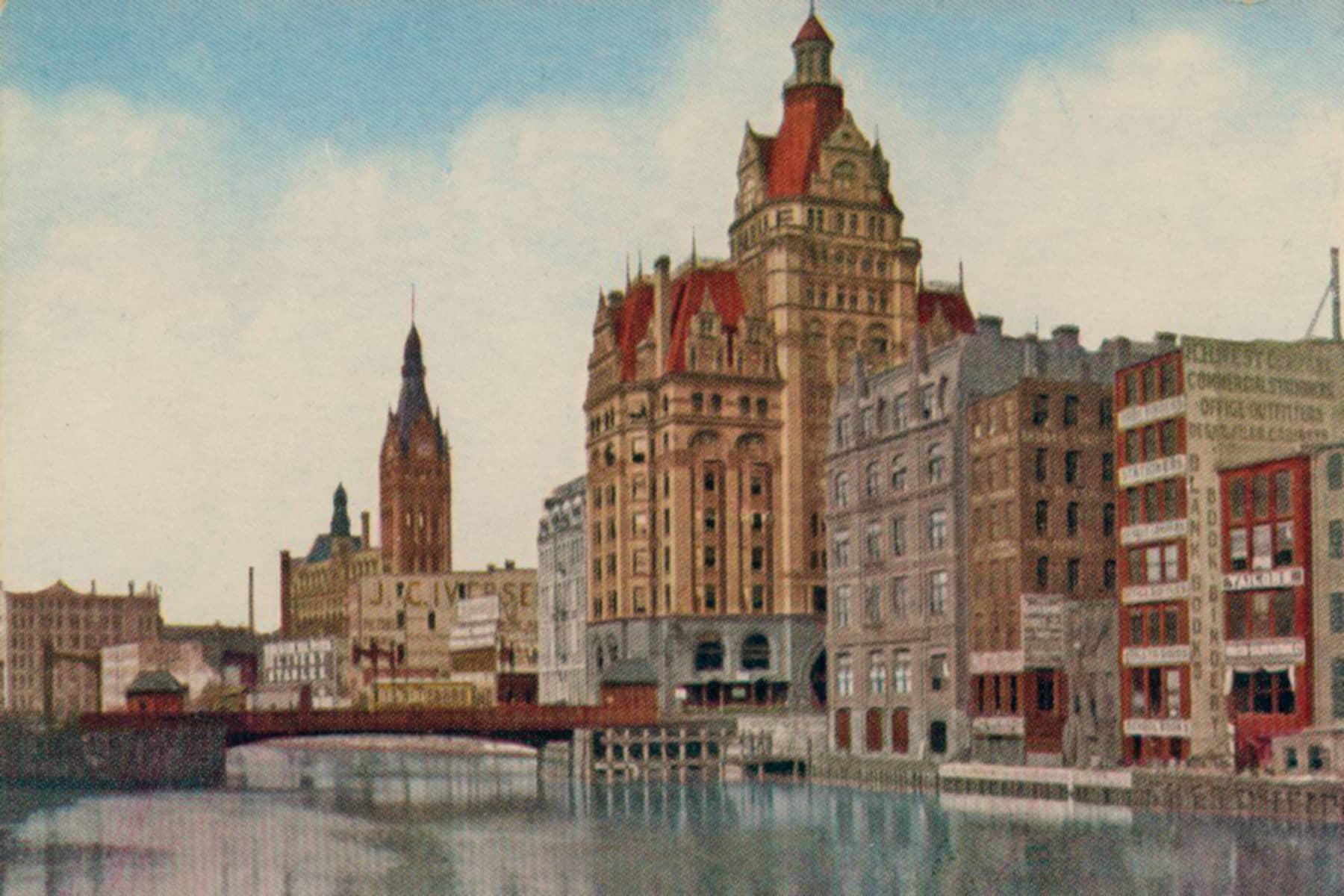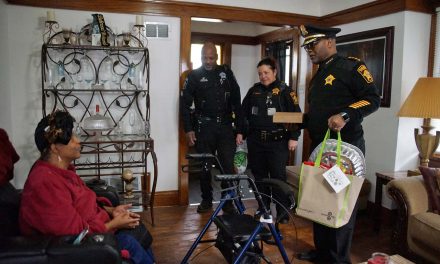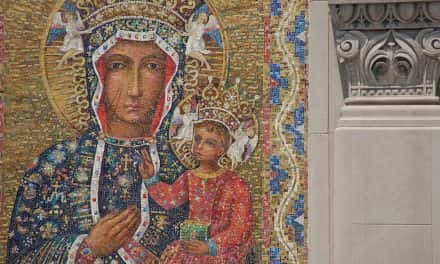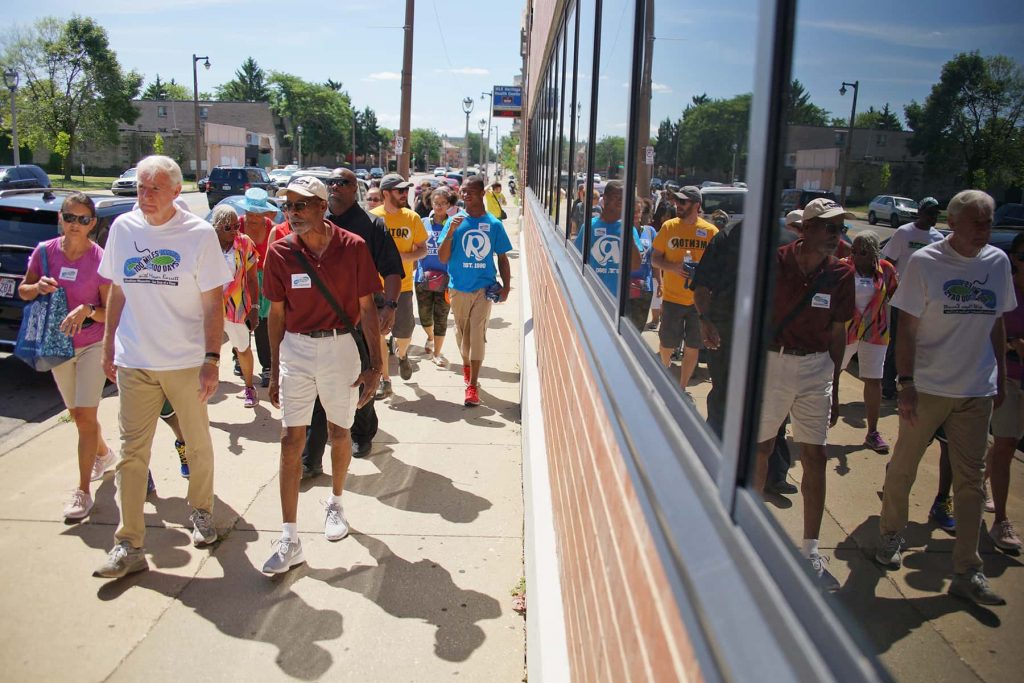
Milwaukee has been known by many nicknames over the years, from the Midwest’s “Brewtown” to America’s “Cream City.” But none have been more telling than the “City of Stories” for those who know its secrets.
No one tells those stories better than celebrated Wisconsin historian and author John Gurda, the Milwaukee-born writer and historian who has been studying his hometown since 1972.
His new book Brewtown Tales: More Stories from Milwaukee and Beyond is the long-anticipated follow-up to his best-selling “Cream City Chronicles.” Published by the Wisconsin Historical Society Press, it serves a fresh batch of essays on life in Milwaukee. It continues Gurda’s common literary thread of connecting the dots in history, so that readers can understand “why things are the way they are.”
“Brewtown Tales is a more generous sampling from the same smorgasbord as Cream City Chronicles, with a wider range of dishes, including memoir and social commentary,” said Gurda.
Drawing from his long-running Sunday column for the Milwaukee Journal Sentinel, Brewtown Tales contains an assortment of captivating stories about the city. Within the 488 pages, readers will find the biography of a bridge, a requiem for a union, odes to both autumn and spring, a poem about aging, tales of two shipwrecks, a frank take on segregation, a visit to a junkyard, and memories of the summer of 1968, among many other things.
“Milwaukee’s City Hall might have collapsed of its own weight, leaving a colorful pile of brick, copper, slate, and ornamental ironwork strewn across the sidewalk at 200 East Wells. The fix has been frightfully expensive, but the alternative was unthinkable. Not only is City Hall one of the most beautiful municipal buildings in America; it’s also the single most important focal point of Milwaukee’s identity. Imagining the city without it is like imagining Rome without St. Peter’s or Washington without the U.S. Capitol. The building’s beginnings gave no hint of future glory. In 1882, after leasing space for nearly ten years in the county courthouse on what is now Cathedral Square, city officials were notified that Milwaukee County would soon need every square inch of its building. The announcement touched off more than a decade of planning and debate. Ancient ward rivalries were rekindled, as partisans of the East, West, and South Sides advanced their own sites for a new building. The East Side won, but the site chosen in 1890 was, to say the least, difficult: a wedge-shaped sliver of reclaimed swampland on the east bank of the Milwaukee River.”
With Gurda’s characteristic wit and eye for detail, his essays convey the distinctive flavors of Milwaukee, as well as a few more exotic places – from Vilas County to Vietnam. Gurda said that it was his hope with the new book for readers to see the enduring connection between past and present in Milwaukee’s community.
“Some might have called it a loss of innocence, others, perhaps, an overdue reckoning. In the 1960s, when most white restidents still considered their city an oasis of racial tranquility, the civil rights movement came to Milwaukee, blowing that delusion to smithereens. Ironically, the movement’s most visible leader at the time was Father James Groppi, a White Catholic priest who served as advisor to the local NAACP Youth Council. A native son of Bay View’s Italian community, he was as unlikely figure who quickly earned a national reputation. I marched with Father Groppi near the start of his eventful career as an activist. In 1966, the priest and his Youth Council decided to protest the Whites-only membership policy of the Eagles Club, one of Milwaukee’s largest fraternal groups. Hundreds of prominent citizens, including what might have been a quorum of Milwaukee County judges, were active Eagles, and Groppi wanted them to resign. How, he asked, could a magistrate sit in judgment of Black Milwaukeeans when he belonged to an organization that had already judged them inferior?”
Even after writing so many books over the years, there are parts of the process that still bring amazement to Gurda.
“One surprise was how easily the individual essays fell into broader categories, including ethnicity, the built environment, nature, politics (broadly defined), and neighborhoods,” said Gurda. “The book is in some ways a Rorschach test of my preoccupations and proclivities.”
One byproduct of the COVID-19 pandemic for Gurda was that it gave him a lot to write about, by providing more subjects to explore in Brewtown Tales. That included “a vivid comparison with the 1918 Spanish flu epidemic, a meticulous account of spring in a woods close to my Bay View home, and a COVID project that advanced my own family history.”
Gurda is the author of two dozen books, including histories of Milwaukee-area neighborhoods, industries and places of worship. One of Gurda’s most ambitious efforts was The Making of Milwaukee, the first full-length history of the community published since 1948, and the basis for an Emmy Award-winning documentary series that premiered on Milwaukee Public Television in 2006. Gurda later appeared as the “bike-riding historian” for many seasons of the hit PBS show Around the Corner with John McGivern.
As a historian, Gurda has connected the past to the present. Looking forward, it begs the question about what has happened in modern times that he would want future historians to talk about.
“The signature story would be Milwaukee’s role, under the Socialists, as a laboratory of democracy and a model of good government, a movement founded squarely on concern for the common good,” answered Gurda.
© Image
River View near Grand Avenue Bridge, Milwaukee, Wisconsin (Postcard, 1907)














